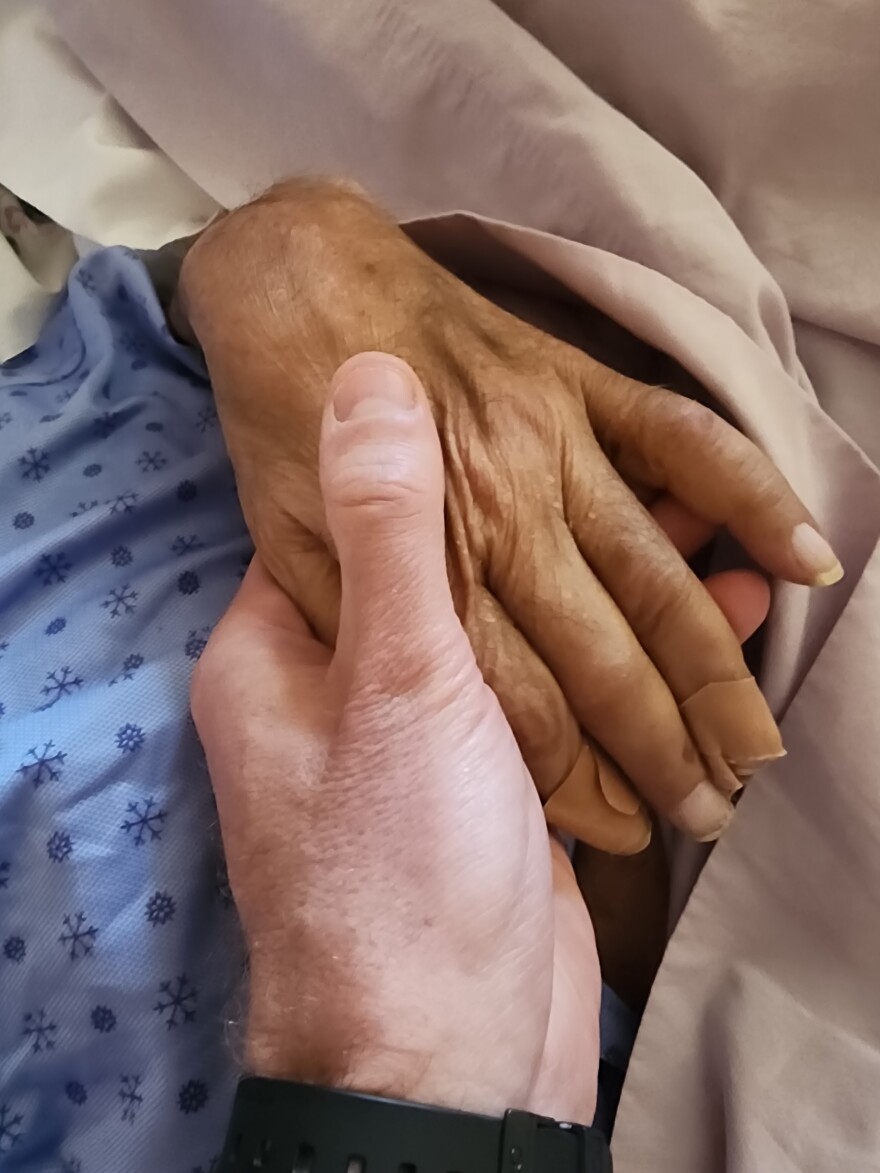Approaching the entrance of Inhora, a comfort care home, in the heart of downtown Albuquerque, the first thing one notices is the sense of calm. Bird songs erase the sounds of traffic and pedestrians.
Dorothy Moya had lived on the streets with her brother Gerald for years. They came to Inhora when Gerald was dying from cancer.
“Well, we found out about it with the social worker from the hospital. And then, we stayed here, me and my brother, she said. “He was happy. He would laugh and smile and everything. Then, he started going down, sitting down slowly, but we stayed here a month and two days, we stayed and he finally passed.”
Inhora isn’t a hospice but it describes itself as a social model hospice house that provides a place to be. The nonprofit opened in April and contracts with several local hospice providers to provide end of life support.
Dorothy is grateful that she was with her brother when he passed away peacefully in a bed. Inhora gets its support through donations and volunteer help which enables their guests to stay for free.
That’s the idea behind Inhora, said Miles Gloetzner, RN, Inhora’s founder and Executive Director. The vision for the nonprofit helping everyone, no matter their circumstances, came to him in a dream - back in 2022.
“People with disabilities have not been cared for well in our culture, through community grassroots efforts here at Inhora and hopefully, other homes like it will be able to, at least at the end of life, take away the financial burden and discrimination for persons who are living with different abilities.”
Investigating the idea led him to the Omega Home Network, a national network of comfort care homes, and other communities with the same mission bringing comfort and caring to those at the end of life . That’s when he realized his dream was not his alone.
A comfort care home or social model hospice house provides free room and board for patient/guests and a family member or friend while they receive hospice care.
Many people at the end of their lives are uninsured or under-insured. Even those on Medicaid, which is federal health insurance for lower-income Americans, may face gaps in hospice coverage which does not include room and board.
Time may simply work against some patients. They may not be expected to live long enough to go through what can be a months-long process of applying and qualifying for Medicaid.
For-profit hospices are constantly working with low income and uninsured patients to help them qualify for care benefits.
Melanie Theroit, a registered nurse, is the co-owner and Patient Care Manager of Bosque Trails Hospice in Albuquerque, said many patients struggle to pay for care.
Up to 10% of her patients come to hospice with no payer source or private funds. Theriot also said, “We also believe that everybody deserves hospice care, and so we will care for people without a payer source.”
Which is why nonprofit comfort homes like Inhora are found across Mountain West states, including Colorado, Nevada, Utah, Idaho, and Wyoming. The idea isn’t new. For instance, the Omega Home Network was founded in 2003 in Tulsa, Oklahoma. It is a
national organization of 50 comfort care homes – and growing rapidly with 79 in development.
Kelley Scott is a registered nurse and founder of Omega. She said the loss of medical providers during the Covid pandemic and the aging of Baby Boomers has led to rapid growth in comfort care homes.
“There is a great storm coming, a Silver Tsunami,” said Scott. “That will continue through 2030 and a few years beyond 2030 is when it's going to peak,” she explained. “We are going to be required to build up providers at all levels of care, from physician to bedside, to be able to meet this need.”
She added that does not include the vast numbers of people who do not have a Medicare hospice benefit, Medicaid, private insurance, or money to pay out-of-pocket.
“So it's been in my mind, it's been like this blinking, swirling red emergency light for the last couple of years, and it's prompted in us a commitment to try to educate and prepare people for what's coming., Learning how to navigate the healthcare system, how to access resources, how to establish relationships with providers, where they can have honest goals of care conversation,” Scott said.
Back at Inhora, Dorothy was allowed to remain after her brother passed away. The team assisted her in finding a job and a place to live. Dorothy said without Inhora she might not have found peace after her brother died.
“They help you here,” she said. “There's nothing to be afraid of. I mean, you're not hurting at all. You don't hurt. You're just waiting there and just waiting for God to come and get you.”








